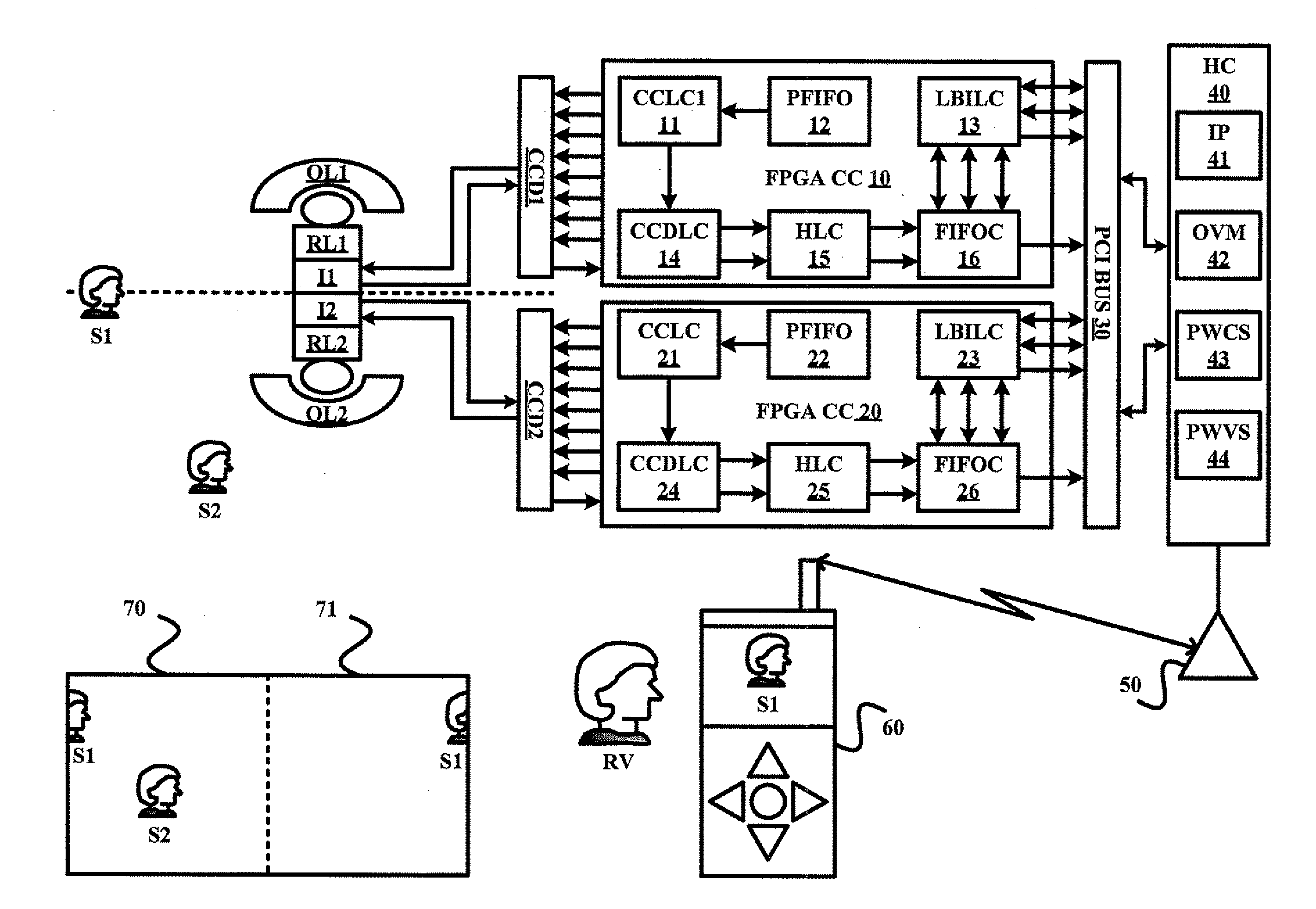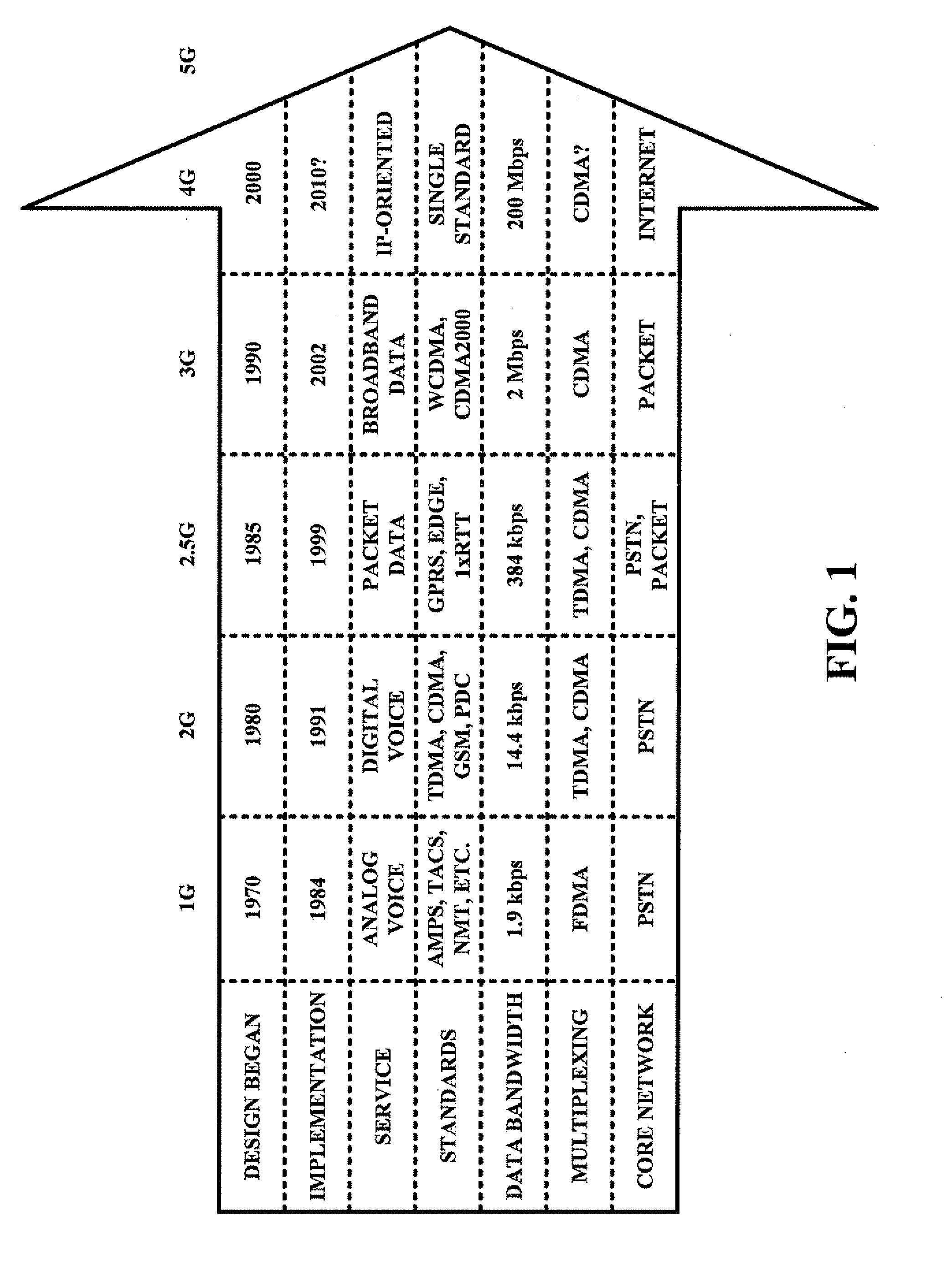Dynamic interactive region-of-interest panoramic/three-dimensional immersive communication system and method
a communication system and dynamic interactive technology, applied in the field of dynamic interactive region of interest panoramic/three-dimensional immersive communication system and method, can solve the problems of reducing the efficiency of the system, and not being desirable in all instances, so as to reduce or remove the distortion of wide-angle objective lens
- Summary
- Abstract
- Description
- Claims
- Application Information
AI Technical Summary
Benefits of technology
Problems solved by technology
Method used
Image
Examples
first embodiment
[0020] In the ROI system shown in FIG. 2, two 2K×2K sensors are placed back-to-back (like in FIG. 23 of the parent invention) and the region or regions of interest are dynamically and selectively addressed depending on the view defined by the users interactive control device. The sensors are addressable using software or firmware associated with the computer-processing portion of the system. The computer-processing portion of the system can be located in a housing worn by a user or in a device carried by a user for wireless applications. Still further, the computer processing means incorporate processing means of a host desktop or laptop. For instance the computer processing can be designed into a personal digital assistant (PDA) or a personal cellular phone (PCS) device (120). In order to save space the computer-processing portion of the system can comprise a Very Large Scale Integrated Circuit (VLSIC).
[0021] In FIG. 2 each objective lens group reflects a portion of the surrounding...
second embodiment
[0026] Alternatively, FIG. 3 shows the ROI system, wherein one 2K×2K imager is incorporated and off axis optical image relay means such as fiber optic image conduits, mirrors, or prisms are used to transmit images to a single CCD with ROI or plural ROI capabilities.
[0027] Instead of a plurality or multiplicity of ROI sensors like in FIG. 2, a single ROI sensor is incorporated in FIG. 2. In FIG. 3 a single charge-coupled-device (CCD) based high-speed imaging system, called a real-time, event-driven (RARE) camera, is illustrated. This camera is capable of readout from multiple sub-windows [also known as regions of interest (ROIs)] within the CCD field of view. Both the sizes and the locations of the ROIs can be controlled in real time and can be changed at the camera frame rate. The predecessor of this camera was described in “High-Frame-Rate CCD Camera Having Subwindow Capability” (NPO-30564) NASA Tech Briefs, Vol. 26, No. 12 (December 2002), page 26. The architecture of the prior ca...
PUM
 Login to View More
Login to View More Abstract
Description
Claims
Application Information
 Login to View More
Login to View More - R&D
- Intellectual Property
- Life Sciences
- Materials
- Tech Scout
- Unparalleled Data Quality
- Higher Quality Content
- 60% Fewer Hallucinations
Browse by: Latest US Patents, China's latest patents, Technical Efficacy Thesaurus, Application Domain, Technology Topic, Popular Technical Reports.
© 2025 PatSnap. All rights reserved.Legal|Privacy policy|Modern Slavery Act Transparency Statement|Sitemap|About US| Contact US: help@patsnap.com



